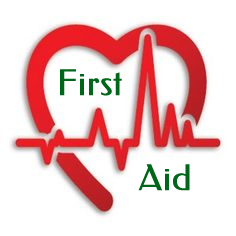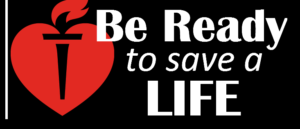First Aid and C.P.R. 1
Written by Kishor Dubey

Be Happy – You don’t have to be a DOCTOR to save a life!
How one can save somebody’s life, by following 6 simple steps?
In the event of an emergency, injury and accidents at places when a doctor is not available, we feel worried, anxious, tense, helpless, baffled and the situation becomes too much traumatic. Normally we just wait desperately for an ambulance.
Relax. You will be surprised and glad to know that you can still save somebody’s life.
In order to do so, you need to know very simple steps to be taken for the sufferer before the medical help arrives. These basic steps are very crucial to preserve life, promote recovery and prevent further damage to the sufferer.
You will be surprised to know that you don’t have to be a doctor to take these simple steps, but you need to know the correct understanding of First Aid.
Let me share an interesting and meaningful conversation with Dr Tushar Vaishnav. Yes, it is really an eye opener and must for everybody to go through it. After all, it is a question of Life and death! However, one needs to know the correct meaning and understanding of first Aid, only then he can have or adopt a right approach in case of an accident, injury or illness.
When I met Dr Tushar Vaishnav, I came to know about wonderful and eye-opening information and knowledge about First Aid and Cardio Pulmonary Resuscitation (C.P.R.). Dr Tushar Vaishnav (M.B.B.S., M.S. (OPH.), C.I.H.) is a senior eye surgeon, industrial consultant and an experienced First aid and C.P.R. trainer. He is a recognized faculty of Indian Red Cross Society, and St. John Ambulance-International.
He shared more details on the subject; he said that First aid or such a humanitarian gesture dates back to 11th Century when kings arranged to provide primary care to soldiers in war or injured pilgrims.
The problem arises when somebody crosses a line of well-defined steps of First aid and C.P.R. while dealing with situations like an accident, injury or Cardiac arrest.
Making the matter still clear Dr Tushar Vaishnav feels that First Aid is an initial care. It would be better to avoid usage of terms like a patient, treatment, doctor etc. In fact, it should be a victim, initial action and first aider to meaningfully or rather better replace the former words.
However, in NO way it reduces the importance of or value of a first aider. This is because the first aiders are the persons very near to the victim and time after the undesirable event is very crucial.
Dr Tushar Vaishnav strongly added that he would call initial few seconds after the mishap – Platinum seconds, when very quick observation, assessment has to be made. As per first aid, the initial one hour after an event is known as a Golden hour. Fastest communication with the victim has to be made and in split-second decisions have to be arrived at in such circumstances.
After this conversation with Dr Tushar Vaishnav, I have become more alert and that is the reason I requested him to share more information and correct knowledge to which he had gladly agreed in the interest of community service.
He revealed 6 simple steps which are as follows:
D.R.S.B.A.C.
D: Dangers
R: Response
S: Shout for help
B: Breathing
A: Airway
C: Circulation
So friends, be ready for more information, knowledge, facts and figures next time on this very essential art and subject. I will share with you very soon. Till then if anybody needs more information or want to arrange First aid and C.P.R. training at their place. Please feel free to call on 9327768686 or visit https://yapconcepts.com/first-aid/ or write us to kishorcdubey@gmail.com . You may visit https://yapconcepts.com/about-trainers/ for more details on trainers.
For more such interesting, valuable and life-saving information, you may call Dr Tushar Vaishnav (Time: 7 pm to 8 pm Ph: +91 992503548, Vadodara, Gujarat, INDIA)
(Based on Conversation between Me (Kishor Dubey) and Dr Tushar Vaishnav)
After all, whom would you call a first aider? What are his rights? What are his duties (if at all)? What are the duties of a doctor? (When he is in charge)These questions need to be answered!
More in next few days….

